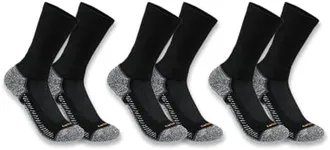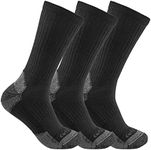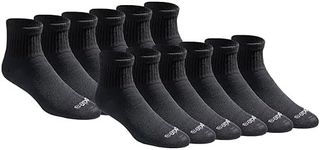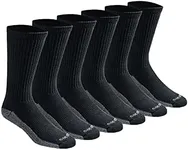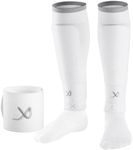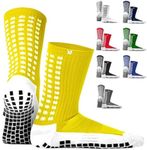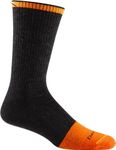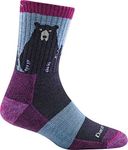Buying Guide for the Best Work Socks
Choosing the right work socks is more important than many people realize. The right pair can keep your feet comfortable, dry, and protected throughout long hours on the job. When shopping for work socks, you should consider the environment you’ll be working in, the type of shoes or boots you’ll wear, and your personal comfort needs. Understanding the key features will help you find socks that support your feet and help prevent blisters, fatigue, and discomfort.MaterialMaterial refers to the fabric or blend of fabrics used to make the socks. This is important because different materials offer different levels of comfort, durability, moisture control, and warmth. Common materials include cotton, wool, polyester, and blends. Cotton is soft and breathable but not great at wicking moisture, while wool is excellent for warmth and moisture control. Synthetic fibers like polyester and nylon add durability and help wick sweat. If you work in hot conditions, look for moisture-wicking synthetics or lightweight wool. For cold environments, thicker wool blends are best. Choose the material based on whether you need warmth, breathability, or moisture management.
CushioningCushioning refers to the thickness and padding in certain areas of the sock, usually the heel and toe. This is important because it affects comfort, shock absorption, and how well your feet are protected from pressure points in your shoes or boots. Socks can range from thin (minimal cushioning) to thick (heavy cushioning). Thin socks are good for tight-fitting shoes or when you need more breathability, while thick, cushioned socks are better for standing or walking on hard surfaces all day. If your job involves a lot of movement or standing, extra cushioning can help reduce fatigue and prevent blisters.
HeightHeight describes how far up your leg the sock goes. This matters because it affects protection, comfort, and compatibility with your footwear. Common heights include no-show, ankle, crew, and over-the-calf. No-show and ankle socks are best for low-cut shoes and warm weather, but they offer less protection. Crew socks cover the ankle and lower calf, making them a versatile choice for most work boots. Over-the-calf socks provide the most coverage and are ideal for tall boots or when you need extra warmth and protection. Choose the height based on your footwear and the level of coverage you need.
Moisture ManagementMoisture management is the sock’s ability to wick sweat away from your skin and dry quickly. This is important because wet feet can lead to blisters, odor, and discomfort. Some socks are designed with special fibers or treatments to improve moisture control. If you work in hot or humid conditions, or if your feet tend to sweat a lot, prioritize socks with good moisture-wicking properties. Look for descriptions like 'moisture-wicking,' 'quick-dry,' or 'breathable' to ensure your feet stay dry.
DurabilityDurability refers to how well the socks hold up to repeated wear and washing. This is important because work socks often face tough conditions, including friction, moisture, and pressure. Durable socks are made with reinforced heels and toes, and often include synthetic fibers for added strength. If your job is physically demanding or you go through socks quickly, look for reinforced or heavy-duty options. Durability is especially important if you want your socks to last and provide consistent support.
Fit and CompressionFit is about how snugly the socks hug your feet and legs, while compression refers to gentle pressure that can help with circulation and reduce fatigue. A good fit prevents bunching and slipping, which can cause blisters. Compression socks are especially helpful if you stand or walk for long periods, as they can reduce swelling and improve comfort. If you have issues with tired or swollen feet, or if you want extra support, consider socks with mild compression. Otherwise, focus on socks that fit well without being too tight or too loose.

